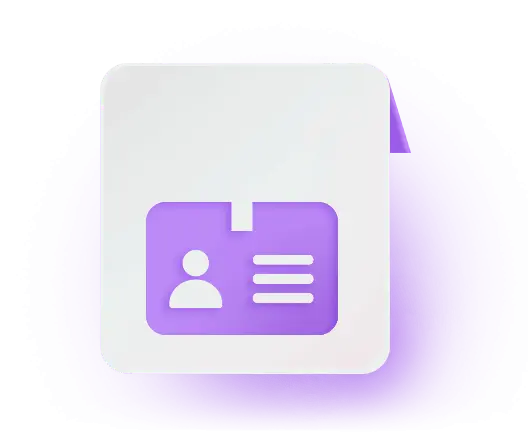- Written by nikhil
- Last Modified on 9-01-2024
The Institute of Chartered Accountants of India (ICAI) currently conducts the CA Foundation test twice a year, replacing the CA-CPT exam. It is an entry-level exam for students interested in a career in chartered accountancy. To become a chartered accountant (CA), candidates must first pass the CA Foundation exam. After that, candidates must pass the intermediate and final exams. To become a CA, students must get through all three phases.
According to the CA Foundation exam pattern 2024, the test will consist of four papers, each paper is worth 100 marks. The first and second papers will be subjective, while the third and fourth papers will be objective. Paper 1 and 2 is conducted for the duration of 180 minutes or 3 hours, and paper 3 and 4 of 120 minutes or 2 hours. There are no negative marks for paper 1 and paper 2, whereas one-fourth of marks will be deducted for every incorrect response in paper 3 and paper 4.
CA Foundation 2024 Brochure
Students get the exam related information such as important dates, application process, exam pattern, exam syllabus, etc., in the brochure provided in the official website. You can find the brochure for CA Foundation course below once released officially.
CA Foundation 2024 Exam Summary
| Particulars |
Details |
| Exam Name |
CA Foundation |
| Conducted by |
The Institute of Chartered Accountants of India (ICAI) |
| Mode of the Examination |
Online (computer-based) centre-based exam |
| Frequency of Conducting the Exam |
It occurs twice a year; in June/July, and in November/December |
| Level of the Examination |
National Level Exam |
| Difficulty Level of the Examination |
Moderate |
| Subjects Asked in the Examination |
The CA Foundation exam comprises four papers.
Paper 1: Principles and Practice of Accounting
Paper 2: Business Laws and Business Correspondence and Reporting
Paper 3: Business Mathematics, Logical Reasoning and Statistics
Paper 4: Business Economics and Business and Commercial Knowledge |
| Duration of the Examination |
The duration of paper 1 and 2 is 180 minutes or 3 hours. The duration of paper 3 and 4 is 120 minutes or 2 hours. |
| Type of the Questions Asked in the Examination |
Paper 1 and 2 are of subjective nature
Paper 3 and 4 are of objective nature |
| Marks of the Examination |
Each paper of the exam carries 100 marks. The total marks of the examination is 400 Marks |
| Language |
Exam is conducted in two languages such as English and Hindi
(Except for section (b) of paper 2, which is about only English). |
CA Foundation 2024 Official Website
https://www.icai.org/
CA Foundation 2024 Latest Updates
Recent Updates
- January 9, 2024: ICAI has declared the Intermediate Examination (UNITS), Intermediate Examination, and Final exam results on its website on January 9, 2023. Check out the official link to know your result status. Along with the result, the merit list has also been declared.
CA Foundation 2024 Exam Pattern
Selection Process
The selection process of CA examination includes scoring the minimum qualifying marks in all three stages of the CA course: CA Foundation, CA intermediate and CA final examination.
CA Foundation selection process includes passing the minimum qualifying marks in all four papers.
CA Foundation 2024 Exam Stages
There are three stages in the CA examination:
- CA Foundation
- CA intermediate
- CA final exam
In order to become a chartered accountant, students must pass all these three stages of the exam.
CA Foundation 2024 Exam Pattern
The exam pattern of the CA Foundation course is given below:
- The CA Foundation exam consists of four papers.
- Each paper is worth a maximum of 100 marks and total marks is 400.
- Papers 1 and 2 are subjective, while papers 3 and 4 are objective.
- The duration of paper 1 and 2 is 180 minutes, whereas paper 3 and 4 is of 120 minutes.
- There is a negative marking for paper 3 and 4. For each incorrect answer, one fourth of the marks will be deducted.
- There is no negative marking for paper 1 and 2.
- To pass the CA Foundation test, students must score a minimum of 40 percent on each paper and a minimum of 50 percent on the overall exam.
- The CA Foundation exam is conducted twice a year in the months of June/ July and November /December.
- The question paper is available in two languages: English and Hindi (Except of the English language paper)
CA Foundation 2024 Total Time
The duration of subjective papers of the CA Foundation exam is 180 minutes, whereas the objective papers are 120 minutes.
| Paper |
Total Time |
| Principles and Practice of Accounting |
180 minutes or 3 hours |
| Business Laws & Business Correspondence and Reporting |
180 minutes or 3 hours |
| Business Mathematics, Logical Reasoning & Statistics |
120 minutes or 2 hours |
| Business Economics & Business and Commercial Knowledge |
120 minutes or 2 hours |
CA Foundation 2024 Syllabus
Paper-wise Syllabus
The CA Foundation exam consists of four subjects. Let us discuss the syllabus of each paper in detail.
CA Foundation Paper 1 (Principles and Practice of Accounting) Syllabus:
The first paper is worth 100 marks and takes 180 minutes to complete. This subject includes gaining a fundamental understanding of accounting concepts and principles. Students should be able to apply them to financial statement preparation and easy problem-solving.
| Chapters |
Sub-topics |
| Theoretical Framework |
- Meaning and Scope of Accounting
- Accounting Concepts, Principles and Conventions
- Accounting Terminology – Glossary
- Capital and Revenue Expenditure, Capital and Revenue Receipts, Contingent Assets and Contingent Liabilities
- Accounting Policies
- Accounting as a Measurement Discipline – Valuation Principles, Accounting Estimates
- Accounting Standards – Concepts and Objectives
- Indian Accounting Standards – Concepts and Objectives
|
| Accounting Process |
- Books of Accounts
- Preparation of Trial Balance
- Rectification of Errors
|
| Bank Reconciliation Statement |
- Introduction, reasons, preparation of bank reconciliation statement.
|
| Inventories |
- Cost of inventory, Net realisable value, Basis and technique of inventory valuation and record keeping.
|
| Concept and Accounting of Depreciation |
- Concepts, Methods of computation and accounting treatment of depreciation, Change in depreciation methods.
|
| Accounting for Special Transactions |
- Bills of exchange and promissory notes
- Meaning of Bills of Exchange and Promissory Notes and their Accounting Treatment; Accommodation bills
- Sale of goods on approval or return basis
- Meaning of goods sent on approval or return basis and accounting treatment
- Consignments
- Meaning and Features of consignment business, Difference between sale and consignment, Accounting treatments for consignment transactions and events in the books of consignor and consignee.
- Average due Date
- Meaning, Calculation of average due date in various situations
- Account Current
- Meaning of Account Current, Methods of preparing Account Current.
|
| Final Accounts of Sole Proprietors |
- Elements of financial statements, Closing Adjustment Entries, Trading Account, Profit and Loss Account and Balance Sheet of Manufacturing and Non-manufacturing entities
|
| Partnership Accounts |
- Final Accounts of Partnership Firms
- Admission, Retirement and Death of a Partner including Treatment of Goodwill
- Introduction to LLPs and Distinction of LLPs from Partnership
|
| Financial Statements of Not-for-Profit Organisations |
- Significance of Receipt and Payment Account, Income and Expenditure Account and Balance Sheet, Difference between Profit and Loss Account and Income and Expenditure Account. Preparation of Receipt and Payment Account, Income and Expenditure Account and Balance Sheet
|
| Introduction to Company Accounts |
- Definition of shares and debentures
- Issue of shares and debentures, forfeiture of shares, re-issue of forfeited shares
- Statement of Profit and Loss and Balance Sheet as per Schedule III to the Companies Act, 2013.
|
CA Foundation Paper 2 (Business Laws And Business Correspondence & Reporting) Syllabus
Business Laws and Business Correspondence & Reporting is divided into two parts in the CA Foundation curriculum 2024. The exam will take three hours and will be worth 100 marks.
It is preferable that you have a thorough understanding of key sections of applicable business legislation as well as the ability to cope with fundamental application-oriented difficulties.
| CA Foundation Syllabus Paper 2: Business Laws (60 Marks) |
| Chapters |
Sub-topics |
| The Indian Contract Act, 1872 |
An overview of Sections 1 to 75 covering the general nature of the contract, consideration, other essential elements of a valid contract, performance of the contract, breach of contract, Contingent and Quasi Contract. |
| The Sale of Goods Act, 1930 |
Formation of the contract of sale, Conditions and Warranties, Transfer of ownership and delivery of goods, Unpaid seller and his rights. |
| The Indian Partnership Act, 1932 |
General Nature of Partnership, Rights and duties of partners, Reconstitution of firms, Registration and dissolution of a firm |
| The Limited Liability Partnership Act, 2008 |
Introduction- covering nature and scope, Essential features, characteristics of LLP, Incorporation and differences with other forms of organisations |
| The Companies Act, 2013 |
Essential features of the company, corporate veil theory, Classes of companies, types of share capital, Incorporation of company, Memorandum of Association, Articles of Association, Doctrine of Indoor Management |
| CA Foundation Syllabus Paper 2: Business Correspondence And Reporting (40 Marks) |
| Chapters |
Sub-topics |
| The Indian Contract Act, 1872 |
An overview of Sections 1 to 75 covering the general nature of the contract, consideration, other essential elements of a valid contract, performance of the contract, breach of contract, Contingent and Quasi Contract. |
| The Sale of Goods Act, 1930 |
Formation of the contract of sale, Conditions and Warranties, Transfer of ownership and delivery of goods, Unpaid seller and his rights. |
| The Indian Partnership Act, 1932 |
General Nature of Partnership, Rights and duties of partners, Reconstitution of firms, Registration and dissolution of a firm |
| The Limited Liability Partnership Act, 2008 |
Introduction- covering nature and scope, Essential features, characteristics of LLP, Incorporation and differences with other forms of organisations |
| The Companies Act, 2013 |
Essential features of the company, corporate veil theory, Classes of companies, types of share capital, Incorporation of company, Memorandum of Association, Articles of Association, Doctrine of Indoor Management |
| Communication |
- Types
- Directions
- Network
- Process
- Problems
- Barriers
- Types of Communication
- Interpersonal Skills
- Listening Skills
- Emotional Intelligence
- Exercises.
|
| Sentence Types (Direct-Indirect Speech, Active and Passive Voice) |
- Sentence: Definition
- Classification of sentence based on connotation
- Assertive sentences
- Interrogative sentences
- Imperative sentences
- Exclamatory sentences
- Optative sentences
- Sentence Structure
- Subject and Predicate
- Verb (Auxiliary, Finite)
- Object (Direct, Indirect)
- Complement
- Adjunct or Adverbial
- Clause Structure
- Types of Clauses – Independent clauses – Dependent clauses – Relative or noun clauses
- Types of sentences
- Simple sentence
- Compound sentence
- Complex sentence
- Compound-complex sentence
- Direct-Indirect Speech
- Introduction
- Procedure for converting Direct speech into Indirect speech
- Rules for converting Direct speech into Indirect speech
- Change in pronouns
- Change in tenses
- Change in modals
- Changes for Imperative sentences
- Changes for Exclamatory sentences
- Changes for Interrogative sentences
- Punctuation in Direct speech
- Rules for converting Indirect speech into Direct speech
- Active Passive Voice: Introduction
- Usage: Active vs. passive voice
- Reasons for using Passive voice
- Changing Passive voice to Active voice
- Changing Active voice to Passive voice
- Suggestions for using Active and Passive voice
- Verbs Voice Active or passive
- Exercises
|
| Vocabulary Root Words Synonyms, Antonyms, Prefixes, Suffixes), Phrasal verbs, Collocations and Idioms. |
- Introduction
- Significance of improving vocabulary
- How to improve vocabulary
- Root words
- Synonyms and Antonyms
- Words formed by using Prefixes
- Words formed by using Suffixes
- Phrasal verbs
- Collocations
- Idioms
- Exercises
|
| Comprehension Passages and Note Making |
- Introduction to Comprehension Passages
- Points to Ponder
- Sample Passages with answers
- Exercises
|
| Note Making |
- Introduction to Note Making
- Significance of Note Making
- Detailed Format Heading(Title)
- Subheading
- Indentation
- Points
- Use of abbreviations
- Summary
- Content
- Expression
- Steps to Comprehend and summarise text
- Helpful Hints
- Sample Passages with Notes
- Exercises
|
| Developing Writing Skills |
- Introduction to Basic Writing
- Process of writing
- Styles of Writing
- Significance of writing skills for students
- Writing Conventions
- Characteristics of good writing
- Do’s and Don’ts of good writing
|
| Précis Writing |
- What is Précis writing?
- Features of good Précis writing
- How to write a Précis
- Do’s and Don’ts of Précis writing
- Examples (Passages with Précis)
- Exercises
|
| Article Writing |
- What is an Article?
- Essential elements of Article Writing
- Detailed Format
- Title
- By- Writer’s Name
- Body – Introduction – Main Idea-Support – Conclusion
- Sample Articles
- Exercises
|
| Report Writing |
- What is a Report?
- Essential elements of Report Writing
- Kinds of Reports
- Reporting for a Meeting/Assembly
- Reporting for a Newspaper
- Reporting for a Magazine
- Detailed Format for above
- Title
- By- Writer’s Name
- Place, Date
- Body – What – When – Where – Who – How
- Tips and Conventions of Report Writing
- Sample Reports
- Exercises
|
| Writing Formal Letters |
- Types of Letters
- Circulars
- Complaints
- Memos
- Promotional Content
- Sales
- Recovery/Remittances
- Detailed format for above
- Date
- Salutation
- Subject
- Body of the Letter – First paragraph – Second paragraph
- Complimentary Closure
- Points to Remember
- Sample Letters
- Exercises
|
| Writing Formal Mails |
- How to Write a Formal Mail?
- Writing Effective Mails
- Essential elements of Mails
- Subject line
- Formal Greetings
- Target Audience(Reader)
- Clarity and Conciseness
- Formal Closing
- Proofread
- Feedback
- Tips and Conventions of Mails
- Sample Mails
- Exercises
|
| Resume Writing |
- Essential Elements of Resume
- Name and contact details
- Objective Summary
- Academic Qualifications and Achievements
- Co-curricular Achievements
- Training Programs attended/completed
- Strengths
- Interests/Hobbies
- Declaration
- Signature
- Resume Writing Tips and Conventions
- Sample Resumes
- Exercises
|
| Meetings |
- Notice
- Agenda
- Drafting minutes
- Action Taken Report
|
CA Foundation Paper 3 (Business Mathematics, Logical Reasoning and Statistics) Syllabus
Paper 3 is divided into three sections, with a total writing time of 180 minutes. Part A has 40 marks, part C has 40 marks, and part B has 20 marks, for a total of 100 marks.
It is advised that you gain a better understanding of basic mathematical and statistical principles and learn how to apply them to business, finance, and other industries. Practising logical reasoning and applying it to little issues is a good idea.
CA Foundation Syllabus Part A: Business Mathematics (40 Marks)
| Chapters |
Sub-topics |
| Ratio and Proportion, Indices and Logarithms |
Ratio and Proportion (Business Applications related to Ratio and Proportion) Laws of Indices, Exponents and Logarithms and AntiLogarithms. |
| Equations |
Simultaneous linear equations up to three variables, Quadratic and Cubic equations in one variable. |
| Linear Inequalities with Objective Functions and Optimization w.r.t. objective function. |
– |
| Time value of Money |
- Simple Interest
- Compound interest
- Depreciation
- Effective Rate of Interest
- Present Value
- Net Present Value
- Future Value
- Perpetuity
- Annuities
- Sinking Funds
- Valuation of Bonds
- Calculating of EMI
- Calculations of Returns:
- Nominal Rate of Return
- Effective Rate of Return
- Compound Annual growth rate (CAGR)
|
| Permutations and Combinations |
Basic concepts of Permutations and Combinations: Introduction, the Factorial, Permutations, results, Circular Permutations, Permutations with restrictions, Combinations with standard results. |
| Sequence and Series |
Introduction Sequences, Series, Arithmetic and Geometric progression, Relationship between AM and GM and Sum of n terms of special series |
| Sets, Relations and Functions |
– |
| Basic applications of Differential and Integral calculus |
(Excluding the trigonometric applications), Applications of Marginal Cost and Marginal Revenue etc |
CA Foundation Syllabus Part B: Logical Reasoning (20 Marks)
| Number Series, Coding & Decoding and the odd man out. |
| Direction Tests |
| Seating Arrangements |
| Blood Relations |
CA Foundation Syllabus Part C: Statistics (40 Marks)
| Chapters |
Sub-Topics |
| Statistical description of Data |
Statistical Representation of Data, Diagrammatic representation of data, Frequency distribution, Graphical representation of Frequency Distribution – Histogram, Frequency Polygon, Ogive, Pie-chart. |
| Measures of Central tendency and Dispersion |
Measures of Central Tendency and Dispersion: Mean Median, Mode, Mean Deviation, Quartiles and Quartile Deviation, Standard Deviation, Coefficient of Variation, Coefficient of Quartile Deviation. |
| Probability |
Probability: Independent and dependent events; mutually exclusive events. Total and Compound Probability and Mathematical Expectation. |
| Theoretical Distributions |
Theoretical Distributions: Binomial Distribution, Poisson distribution – Basic application and Normal Distribution – Basic applications. |
| Correlation and Regression |
Correlation and Regression: Scatter diagram, Karl Pearson’s Coefficient of Correlation Rank Correlation, Probable Error and Probable limits. Regression lines, Regression equations, Regression coefficients. |
| Index Numbers |
Uses of Index Numbers, Problems involved in the construction of Index Numbers, Methods of construction of Index Numbers. |
CA Foundation Paper 4 (Business Economics and Business & Commercial Knowledge) Syllabus
Paper four is divided into two portions and requires a total of 180 minutes to complete. Part A is worth 60 marks, while part B is worth 40 marks. It is recommended to first grasp business economics concepts and theories before applying them to simple problem-solving.
CA Foundation Syllabus Part A: Business Economics (60 Marks)
| Business Economics |
Sub-topics included in Business Economics |
| Introduction to Business Economics |
Meaning and scope of Business Economics
Basic Problems of an Economy and Role of Price Mechanism. |
| Theory of Demand and Supply |
Meaning and determinants of demand, Law of demand and Elasticity of demand ─ Price, income and cross elasticity
Theory of consumer’s behaviour – Marshallian approach and Indifference curve approach
Meaning and determinants of supply, Law of supply and Elasticity of supply.
Demand Forecasting |
| Theory of Production and Cost |
Meaning and Factors of production
Laws of Production – The Law of Variable proportions and Laws of Returns to Scale, Producer’s equilibrium
Concepts of Costs ─ Short-run and long-run costs, Average and marginal costs, Total, fixed and variable costs. |
| Price Determination in Different Markets |
Various forms of markets – Perfect Competition, Monopoly, Monopolistic Competition and Oligopoly
Price determination in these markets. |
| Business Cycles |
- Meaning
- Phases
- Features.
- Causes behind these Cycles.
|
CA Foundation Syllabus Part B: Business & Commercial Knowledge (40 Marks)
| Business & Commercial Knowledge |
Sub-topics included in Business & Commercial Knowledge |
| Business and Commercial Knowledge – An Introduction |
Nature of Business, Profession and Employment. Objectives of Business. Economic and Non-Economic Activities, Forms of Business Organisations. |
| Business Environment |
Micro and Macro Environment, Elements of Micro Environment – Consumers/Customers, Competitors, Organisation, Market, suppliers, Intermediaries, Elements of Macro Environment – Demographic, Economic, Political-legal, Socio-cultural, Technological, Global Environment. |
| Business Organisations |
Overview of selected Indian and Global Companies. |
| Government Policies for Business Growth |
Policies creating a conducive business environment such as Liberalisation, Privatisation, Foreign Direct Investment. |
| Organisations Facilitating Business |
- Indian Regulatory Bodies – RBI, SEBI, CCI, IRDAI
- Indian Development Banks – NABARD
|
| Common Business Terminologies |
- Finance and Stock & Commodity Markets Terminology.
- Marketing Terminology.
- Banking Terminology.
- Other Business Terminology.
|
Topics of Chpaters
CA Foundation sections and topics are listed below. Each row denotes the topic as well as the importance of the topic in each of the four papers. The table will assist applicants in properly preparing for the exam and focusing on key areas.
| Topics of Chapters |
Weightage |
| Theoretical Framework |
5-10% |
| Accounting Process |
25-30% |
| Bank Reconciliation Statement |
| Inventories |
| Concept and Accounting of Depreciation |
| Accounting for Special Transactions |
15-20% |
| Final Accounts of Sole Proprietors |
30-40% |
| Partnership Accounts |
| Financial Statements of Not-for-Profit Organisations |
| Introduction to Company Accounts |
10-15% |
| The Indian Contract Act, 1872 |
25-35% |
| The Sale of Goods Act, 1930 |
20-25% |
| The Indian Partnership Act, 1932 |
20-25% |
| The Limited Liability Partnership Act, 2008 |
5-10% |
| The Companies Act, 2013 |
15-20% |
| Communication |
10-15% |
| Sentence Types and Vocabulary |
20-30% |
| Vocabulary Root Words, Synonyms, Antonyms, Prefixes, Suffixes, Phrasal verbs, Collocations and Idioms |
| Comprehension Passages and Note-Making |
20-30% |
| Developing Writing Skills |
35-40% |
| Ratio and Proportion, Indices and Logarithms |
20-30% |
| Equations and Matrices |
| Linear Inequalities |
| Time Value of Money |
30-40% |
| Permutations and Combinations |
30-50% |
| Sequence and Series |
| Sets, Relations and Functions |
| Basic applications of Differential and Integral calculus |
| Number series coding and Decoding and the odd man out |
60-70% |
| Direction Tests |
| Seating Arrangements |
| Blood Relations |
30-40% |
| Syllogism |
| Statistical Representation of Data, Diagrammatic representation of data, Frequency distribution, Graphical representation of Frequency Distribution in the form of Histogram, Frequency, Polygon, Ogive, Pie-chart |
45-50% |
| Measures of Central Tendency and Dispersion: Mean, Median and Mode, Mean Deviation, Quartiles and Quartile Deviation, Standard Deviation, Coefficient of Variation, Coefficient of Quartile Deviation |
| Probability: Independent and dependent events; mutually exclusive events.Total and Compound Probability; Bayes’ theorem; and Mathematical Expectation |
25-30% |
| Theoretical Distribution: Binomial Distribution, Poisson distribution–basic application and Normal Distribution – basic applications. |
| Correlation and Regression: Scatter diagram, Karl Pearson’s Coefficient of Correlation Rank, Correlation, Regression lines, Regression equations and Regression coefficients |
10-15% |
| Index Numbers and Time series |
10-15% |
| Introduction to Business Economics |
15-20% |
| Theory of Demand and Supply |
35-40% |
| Theory of Production and Cost |
| Price Determination in Different Markets |
25-30% |
| Business Cycles |
15-20% |
| Introduction to Business |
15-18% |
| Business Environment |
15-18% |
| Business Organisations |
15-20% |
| Government Policies for Business Growth |
15-18% |
| Organisations Facilitating Business |
15-18% |
| Common Business Terminologies |
15-18% |
CA Foundation 2024 Study Plan to Maximise Score
Preparation Tips
Students who are taking the CA Foundation test for the first time have little experience with preparation. We are providing you with expert advice that will assist you in achieving a good CA Foundation result.
1. Prepare a Time Table
Preparing a timetable is the first step before beginning your study. Those students who believe that setting a schedule is a waste of time have made a blunder. Make a proper plan instead of wasting time every day on thinking about what to learn or where to begin. Pick up your study materials, review the CA Foundation test format, and schedule time for each subject and chapter based on the number of days left in your exam. This will not only help you arrange your studies, but it will also assist you in analysing your performance.
2. Focus on Strong and Easy Topics
Because CA Foundation Maths does not appear to be a scoring topic for non-maths or commerce students, it is recommended that they concentrate on statistics and logical reasoning. Logical thinking is worth 20 marks, while the remaining marks are split evenly between maths and statistics. As a result, students should concentrate on statistics and logical reasoning.
3. Preparing a Revision Notes
Because the course is so large that it’s nearly impossible to revise in a single day, the ideal source notes for exam revision are your own handwritten notes. As a result, always prepare your own brief notes throughout class, which will come in handy around exam time.
4. Revision
The course is extensive, and you should review it at least three times before the tests. Plan your revision effectively, for example, revise each and every topic in your first revision and mark the same sort of questions so that you don’t waste time answering the same questions again. Attempt to complete a single question for each kind during the second revision, and mark questions for the third revision that appear to be difficult, significant, or require additional revision. Read the concepts throughout your last and third revisions, and only answer the questions that you believe need to be revisited.
5. CA Foundation Mock Test
CA Foundation model test papers have shown to be really beneficial in passing the exam. They taught you how to manage your time and appropriately assess questions. Of course, once you have finished the course, you should solve the CA Foundation mock test papers. However, it has been observed that pupils are unable to solve the model test papers due to a shortage of time. As a result, it’s best to solve the mock tests at the end of each chapter and then finish the course by solving the entire mock test.
| Subject |
Preparation Tips |
| Principles and Practice of Accounting |
Because it is well recognised that this subject can only be grasped by a lot of practice, one should always aim to finish the syllabus first and then set aside time to practise more questions, ensuring that the entire syllabus is covered. Another important step is to try mock or sample papers advised by the ICAI; this will help you acquire a clearer picture of concepts and a better comprehension of the subject. |
| Business Laws and Business Correspondence and Reporting |
Business law and BCR are subjective subjects, which means they are made up entirely of theory. Both of these tasks must be completed with the use of notes and reference materials. Most importantly, the ICAI’s study material is like a piece of diamond that you can’t lose. |
| Business Mathematics and Logical Reasoning & Statistics |
You may take it lightly because it is an MCQ-based paper, but remember that what appears to be simple is always the thing that costs us the most. Mathematics, as the most difficult topic, takes a great deal of time and effort, as well as a great deal of practice. Understanding the subject, answering questions, referring to pictures, completing practice question papers, and, most importantly, focusing on conceptual clarity are the study methods that may perform best. |
| Business Economics and Business and Commercial Knowledge |
As a result, this is an MCQ-based test, and the only thing that will help you pass it is conceptual clarity. Candidates must ensure that they thoroughly review the study materials and take adequate notes on each topic. You should also decide to take some practice examinations after that; this will help you comprehend the exam format and organise your next study strategy accordingly. |
CA Foundation 2024 Detail Study Plan
We assume that students can devote 7 hours each day to their studies, for a total of 1260 hours over the course of six months, compared to the 4320 hours available. (24 hours in a day multiplied by 30 days multiplied by six months)
| Knowledge (theoretical) |
Application (practical) |
Subjects |
Time |
| 5%-20% |
80%-95% |
1)Principle and practice of accounting(s) |
300 hours |
| 50%-65% |
35%-50% |
2a)Business laws(s) |
200 hours |
| 100% |
|
Business 2b)correspondence and reporting(s) |
100 hours |
| |
100% |
3)Business mathematics and logical reasoning |
300 hours |
| 40%-50% |
50%-60% |
4a)Business economics |
200 hours |
| 100% |
|
4b)Business and commercial knowledge |
100 hours |
CA Foundation 2024 Important Dates
CA Foundation 2024 Registration - Start & End Date
The ICAI CA 2024 official notification will be published on the ICAI’s website soon. The deadline to register for the CA Foundation will be mentioned in the notification. Those who miss the deadline for CA Foundation registration forms will be able to register for the exam, for a late charge of INR 600. Candidates must keep up to date by visiting the official website on a regular basis.
CA Foundation 2024 Admit Card
CA Foundation admit cards will be available on the official website in the near future. The admit card contains vital information such as the exam schedule, date, and location. The CA Foundation admission card is required for all students to bring to the test centre. The exam will also take place outside of the United States (i.e., Abu Dhabi, Dubai, Kampala, Kathmandu, Uganda, Kampala, Muscat, Kuwait, Bahrain). To minimise any complications, candidates should check their exam times and be at the exam sites long before the exam begins.
CA Foundation 2024 Exam Dates
The exam dates for the CA Foundation have been issued by the organising authority. The exam will take place based on the schedule mentioned in the notification. According to the ICAI CA Foundation date sheet, each paper will have its own set of dates. On a candidate’s hall ticket, the date on which they must attend for the test can be found. Candidates can take the exam in either English or Hindi, depending on their preference.
Candidates can obtain a notion of the CA Foundation 2024 time slots by looking at the table below:
| Paper |
Date |
Timings (IST) |
Duration |
| Paper 1 |
Soon Announced |
2 PM to 5 PM |
3 Hours |
| Paper 2 |
Soon Announced |
| Paper 3 |
Soon Announced |
2 PM to 4 PM |
2 Hours |
| Paper 4 |
Soon Announced |
CA Foundation 2024 Result Date
The CA Foundation exam results will be released shortly after the exam. Along with the CA Foundation findings, the merit list will be accessible. Candidates who received the highest scores will be placed on the merit list. The qualifying candidates will be able to apply for the intermediate level after the results are announced.
- Latest: ICAI has declared the CA exam results on January 9, 2024. The link to results has been added in the latest update section above.
CA Foundation 2024 Eligibility Criteria
Age Criteria
The conducting authority has not set an upper age limit for taking the CA Foundation (CA CPT) exam. Candidates who want to pursue a CA course are not restricted by any age limitations imposed by the ICAI.
Educational Qualification
Any recognised board must have administered class 10th and class 12th to the candidate.
Students with the following educational qualifications are eligible to take the CA Foundation exam:
- Candidates who have passed a state or national government-regularised class 10 test or an equivalent examination. Such students can apply for provisional admission, which will be confirmed only once they pass their Class 12 exams.
- Candidates who are taking or have passed their class 12 examinations can also enrol with the ICAI for the CA Foundation exam.
Equivalent Education Qualifications:
Students must pass 10+2 from one of the following government-recognized boards to meet the eligibility criteria for CA Foundation 2024:
- Board of Intermediate Education, Andhra Pradesh
- Assam Higher Secondary Education Council
- Bihar School Examination Board
- Central Board of Secondary Education (CBSE)
- Chhattisgarh Board of Secondary Education
- Council for Indian School Certificate Examinations (CISCE)
- Goa Board of Secondary and Higher Secondary Education
- Gujarat Secondary & Higher Secondary Education
- Board of School Education, Haryana
- H. P. Board of School Education
- J & K State Board of School Education
- Jharkhand Academic Council
- The government of Karnataka Department of Pre-University Education
- Kerala Board of Higher Secondary Education
- Maharashtra State Board of Secondary & Higher Secondary Education
- Board of Secondary Education, Madhya Pradesh
- Council of Higher Secondary Education, Manipur
- Meghalaya Board of School Education
- Mizoram Board of School Education
- Nagaland Board of School Education
- Council of Higher Secondary Education, Orissa
- Punjab School Education Board
- Board of Secondary Education, Rajasthan
- Tamil Nadu State Board of School Examinations
- Tripura Board of Secondary Education
- U.P. Board of High School and Intermediate Education
- Board of School Education, Uttarakhand
- West Bengal Council of Higher Secondary Education
CA Foundation 2024 No. of Attempts
Students can attempt or write a CA Foundation exam in three years or six times (two times in every year).
CA Foundation 2024 Admit Card
| Event |
Date |
| Date of Downloading CA Foundation Admit Card 2024 |
To Be Announced |
| CA Foundation Exam 2024 |
To Be Announced |
CA Foundation 2024 Exam Centres List
Candidates must choose a CA Foundation exam centre 2024 based on its proximity to their home. This is perfect because it will allow candidates to save money on transportation as well as time. If a candidate chooses the incorrect CA Foundation exam centre during the correction period, they will be permitted to change it.
Ahmedabad, Aurangabad, Bengaluru, Bhopal, Chennai, Delhi/New Delhi, Hyderabad, Indore, Kolkata, Mumbai, Nagpur, Nashik, Pune, Surat, Thane, Vadodara, and Vasai have been divided into zones for your convenience. All efforts will be made to assign candidates who have chosen a specific zone to an exam centre within that zone.
Note: Candidates should check out their admit cards for the information regarding the exam centres.
CA Foundation 2024 Cut-off
Expected Cut-off
For each of the papers, the predicted minimum marks to qualify for the CA Foundation test are listed below.
| Section |
Sectional Cut-off for CA Foundation |
Overall Percentage Required |
| Paper I- Principles and Practice of Accounting |
40 Marks |
50% |
| Paper-II- Business Laws & Business Correspondence and Reporting |
40 Marks |
| Paper III- Business Mathematics, Logical Reasoning & Statistics |
40 Marks |
| Paper IV- Business Economics & Business and Commercial Knowledge |
40 Marks |
The sectional cut-off marks and overall percentage required to pass the CA Foundation test are shown in the table below. To be qualified for the counselling process, candidates should check the sectional cut-offs for each topic.
| Section |
Sectional Cut Off for CA Foundation |
Overall Percentage Required |
| Paper I- Principles and Practice of Accounting |
40 Marks out of 100 (40%) |
200 Marks out of the maximum marks (50%) |
| Paper-II- Business Laws & Business Correspondence and Reporting |
40 Marks out of 100 (40%) |
| Paper III- Business Mathematics, Logical Reasoning & Statistics |
40 Marks out of 100 (40%) |
| Paper IV- Business Economics & Business and Commercial Knowledge |
40 Marks out of 100 (40%) |
FAQs on CA Foundation 2024
Q1. What is the total number of CA Foundation subjects?
A. Principles and Practice of Accounting, Business Laws and Correspondence and Reporting, Business Mathematics and Logical Reasoning & Statistics, and Economics and Business and Commercial Knowledge are the four CA Foundation subjects.
Q2. Does the CA Foundation exam include any negative marking?
A. Yes, there is a negative marking of 0.25 for each incorrect response in papers 3 and 4, whereas there is no negative marking for papers 1 and 2.
Q3. How many times can students take CA Foundation exams?
A. A student can take the Foundation exam three times in three years, for a total of six attempts at the CA Foundation exams.
Q4. Candidates from Canada apply for the CA Foundation exam?
A. Yes. Candidates from Canada can apply for the CA Foundation exam. But, need to submit the nationality proof at the time of registration.
Q5. What are the new exam dates of CA Foundation?
A. Currently, there are no ICAI CA 2024 exam dates; as soon as ICAI announces any exam schedule, we will update the same on this page.
Similar Exams to CA Foundation 2024
List of Parallel Exams
There are various exams similar to the CA Foundation exam in terms of exam pattern, exam syllabus etc.
Some of the similar exams like CA Foundation exams are listed below:
- CPA – Certified Public Accountant.
- CMA – Certified Management Accountant
- CIMA – Certified Institute of Management Accountant
- MBA – Master of Business Administration in various fields.
- ACCA – association of Chartered Certified Accountants
- CFP – Certified Financial Planner
- CIA – Certified Industrial Accountants.
Future Exams After CA Foundation 2024
List of Future Exam
As we know the CA Foundation exam is the basic stage of becoming a chartered accountant. The other or next stage of exams followed by CA Foundation exams are:
CA Intermediate Exam
CA Intermediate is the second level exam of the Chartered Accountancy course in India. It consists of eight courses and about 7000 pages of study material that a student must complete in the nine months given for study.
The group method adds to the difficulty of the exam because each group consists of four subjects, and a candidate must pass all four papers to pass the group. Failure to pass one topic automatically results in the failure of the entire group, implying that the student fails all of the subjects he has passed.
CA Final Exam
The Institute of Chartered Accountants of India (ICAI) administers the national-level CA Final exam in a paper-and-pencil format at various test centres in India and abroad. The chartered accountant final course is the last step in the process of becoming a chartered accountant. Candidates who have successfully completed the CA Intermediate course are eligible to enrol in the CA Final course. Before registering, candidates must also complete 2.5 years of article-ship.
Practical Knowledge/Career Goals
CA Foundation 2024 Career Prospects
One of the most difficult occupations in the world is that of Chartered Accountant. A CA’s major responsibility is to keep track of and evaluate the company’s financial health. CAs can work in a variety of settings, including the private, public, and government sectors. CAs also develop and maintain financial accounts and budgets, perform financial audits, and provide advice to clients on tax planning, financial risks, and corporate acquisitions and mergers, among other things.
A qualified accountant has the option of working for a firm as an employee or starting their own firm. Working with international accounting firms or smaller accounting firms, known as small and medium practices (SMPs), manufacturing, retail, and telecoms industries, educational institutions, charities, and not-for-profit organisations, to name a few examples, is also an option.
CA professionals can also go for higher studies and pursue the following courses:
- Cost Management Accountancy (CMA)
- Bachelor of Law
- Master of Business Administration (MBA)
- PhD in Accounting or Taxation
- Chartered Financial Analyst (CFA)
- Company Secretary (CS)
- Chartered Institute of Management Accountants (CIMA)
- Cost and Works Accountants (CWA)
- Financial Risk Management (FRM)
- Certified Information System Auditor (CISA)
- Certified Public Accountant (CPA)

















































